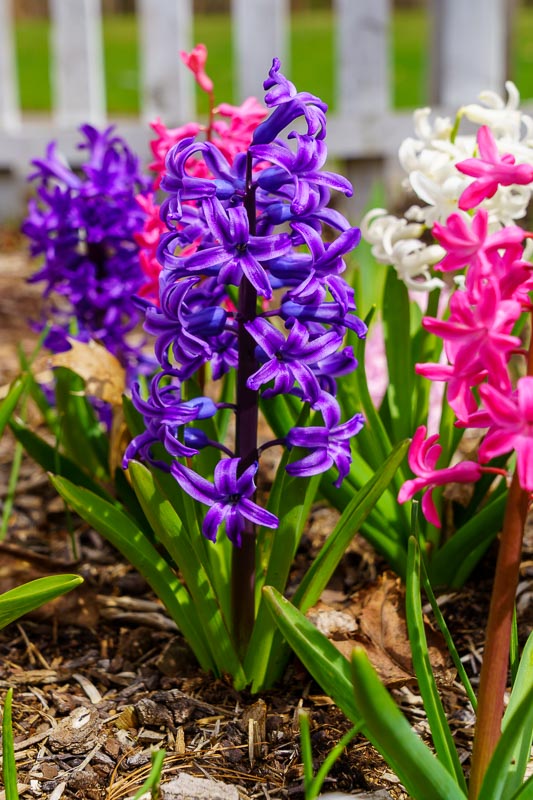| Common Name | (Blue Jacket, Jan Bos, Carnegie, Fondant, and City of Haarlem) Hyacinth |
| Botanical Name | Hyacinthus orientalis |
| Mature Size | 8” - 10” tall; 4” - 6” wide |
| Sun Exposure | Full Sun, Partial Shade |
| Soil Type | Moist but well-drained |
| Soil pH | Acidic Soil, Clay Soil, Loamy Soil, Sandy Soil |
| Bloom Time | Early to mid spring |
| Flower Color | (Deep procelain blue, Vivid red, Pure white, Soft pink, and Soft primrose yellow) |
| Care | For the strongest and farthest-reaching scent, grow hyacinth in large groups. Hyacinth flowers also mix well with other spring-blooming bulbs, as they come in so many colors and sizes. Their spiky flower stalks make a nice counterpoint to cup-shaped tulips and ruffled daffodils. |
| Soil | Hyacinth bulbs are not particular about soil pH, but they prefer a slightly acidic to neutral soil. They also do best in soil that is loose and well-drained; they will not tolerate wet soils. Rich soil can lead to floppy stalks, so go easy on the organic matter when preparing or amending the soil. |
| Water | Water the ground well after you plant the bulbs. Continue watering into winter if there is no regular rain, but allow the ground to dry out between watering. If the bulbs sit in cool, wet soil, they will eventually rot. Check the ground by sticking your finger in, and water only when it's totally dry. Usually, this is once or twice a week, depending on your climate. Generally speaking, about 1/2 inch of water per week—combined irrigation and rainfall—will be sufficient for hyacinths. But this depends on how well the soil drains. |
| Temperature and Humidity | Hyacinths can be expected to survive the winter in USDA plant hardiness zones 4 to 8. They might need some winter protection in colder zones and some pre-chilling in warmer zones, depending on the variety. In zones where winter temperatures remain above 60 degrees Fahrenheit, dig up the bulbs and chill them somewhere dark and cold for six to 10 weeks before replanting. |
| Fertilizer | The easiest way to feed new bulbs is to toss some bulb food into the hole at planting time. There are many fertilizers available for feeding bulbs—10-10-10 is recommended—or you can use an ordinary bone meal. Feed the bulbs a mere handful at planting and again in the spring when the new growth first appears by scratching some bulb food into the nearby soil and watering well. For the amount to use, follow the product label instructions. |
| Pruning | Let foliage die down naturally. Leaves provide nourishment for bulbs to produce future growth and blooming. |
| Source | https://www.thespruce.com/growing-and-caring-for-hyacinth-plants-1402248 |
